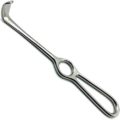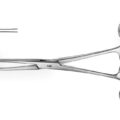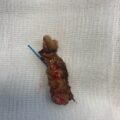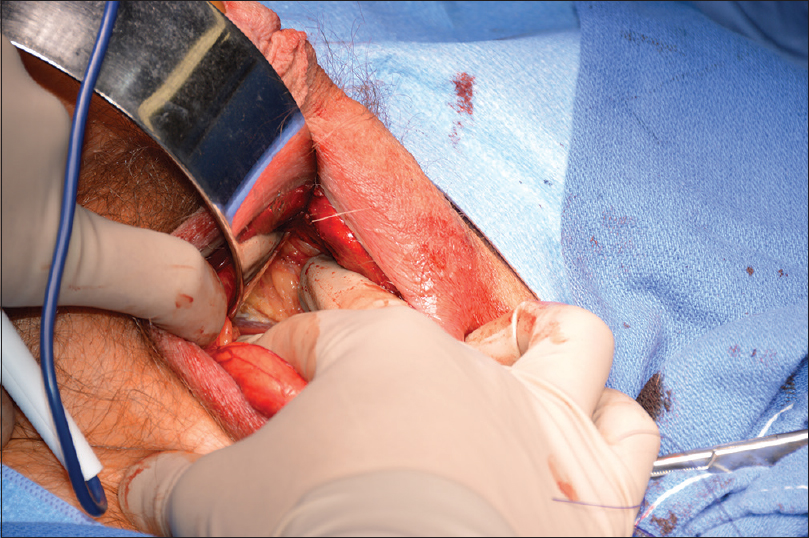
What is Deaver’s Retractor?
The Deaver’s Retractor is a hand-held retractor. It is named after the American surgeon John B. Deaver. It is made up of stainless steel having a curved retracting blade and flat handle. The width of the handle is equal to the width of the retracting blade. The handle is slightly curved so as the hand gripping the retractor does not slip. It is a held-hand retractor hence assistants have a pretty bad time holding it on if the surgery is prolonged since holding it for a longer period of time is uncomfortable.
Uses of Deaver retractor
All the retractors are built with the basic concept of holding the tissue or the viscera to keep the operator’s field of surgery clear. Deaver is a deep tissue retractor hence it is used to retract viscera like the liver, stomach, duodenum, etc.
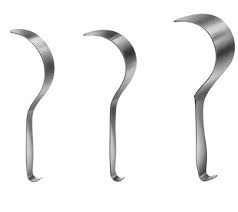
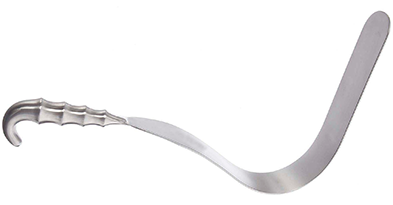
Surgical Procedure: The retractor is used to retract the liver in surgical procedures like cholecystectomy (removal of the gall bladder), vagotomy (the vagus nerve resection), and in cases of repair of duodenal ulcer perforation. In addition to the retraction of the liver, the retractor is handy in retracting the stomach and duodenum during cholecystectomy. The Deaver retractor can be used to hold organs away from the surgical site inside the abdominal cavity or to move the heart or lungs gently in the surgeon’s direction.
History of Deaver retractor
The earliest recorded use of a retractor dates back to the seventh century. The modern retractor is designed after a model developed in 1936 (It is named after the American surgeon John B. Deaver).
Deaver was considered an aggressive and radical surgeon—a great “slasher.” He was among the early advocates of immediate appendectomy for acute appendicitis. He often uttered the phrase, “an inch and a half, a minute and a half, a week and a half” to mean, respectively, the length of the incision, the time it took to perform the operation, and the duration of the hospital stay. In 1886, he joined the staff of the German Hospital (now Lankenau) and developed an enormous personal practice in surgery. His Saturday afternoon operative clinics were attended by surgeons throughout the world while he performed as many as 25 operations in an afternoon. It was, in fact, at the German Hospital where he achieved his greatest recognition, although he was called to the post of professor of the practice of surgery at the University of Pennsylvania in 1911 and assumed the Chair seven years later.
“Cut well, get well, stay well,” was another of his pet phrases. He is also responsible for introducing the use of the word “pathology” to mean pathologic findings of lesions rather than the study (e.g., “What is the pathology.”). Deaver wrote primarily on abdominal surgical conditions—ulcer, hepatobiliary disease, colon resection. His paper on lumbar versus inguinal colostomy, the subject for this classic presentation, represents a fascinating perspective of the surgeon’s philosophy in the management of rectal cancer and colorectal obstruction prior to the 20th century.
Deaver retractors were designed to keep the large organs inside the abdomen protected from the surgical instruments used during the operation. The Deaver retractor is used during a thoracic area procedure to hold the chest flesh away from the incision.
It is essential to ensure that the retractor is in good condition for a successful operation. The surgeon must make an incision and instruct the assistant at the edges of the incision to place the retractor on the flesh. This medical tool allows the surgeon to have a clear view of the area of operation.
What is the function of the Deaver retractor?
The retractor has smoothed edges to reduce the trauma to the tissue being held in place. A Deaver retractor is generally used for deep abdominal and chest surgeries.
Types of Retractors and Surgical Procedure
There are various types of retractors. Each is unique in the form to do the least damage to the tissue that the retractor aims to hold back.
Richardson retractor: The Richardson retractor is a small, curved medical device for quick gripping with a handle. It is the most commonly used retractor in abdominal or thoracic operations. Based on the operation’s surgical requirements, it may be single or double-ended.
Senn retractor: Another commonly used retractor is the Senn retractor. It is a double-ended surgical instrument, with one side shaped like a blade and the other side having three prongs. This retractor is used for most hand and foot surgeries. The Senn retractor is used to hold soft flesh away from the surgical site for short periods of time.

